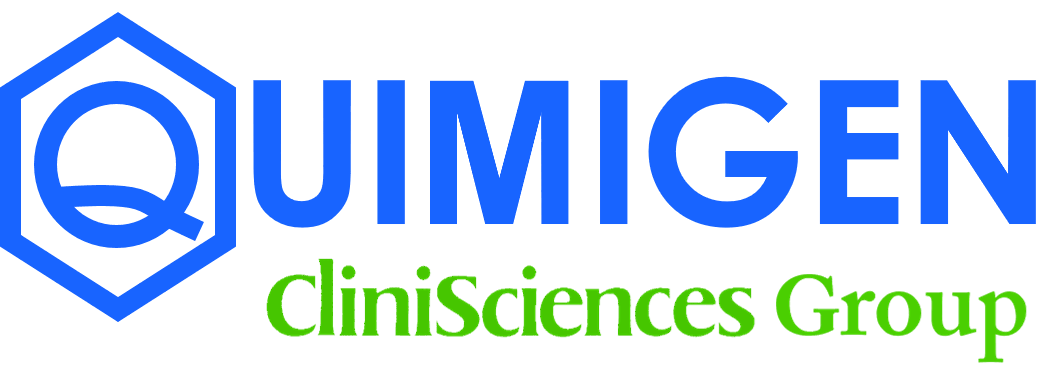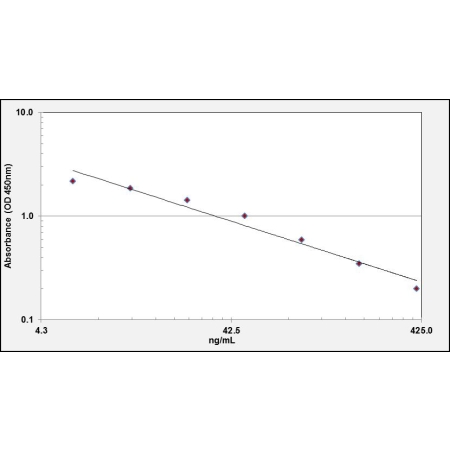Quimigen Portugal > Hyaluronic acid ELISA Kit
Hyaluronic acid ELISA Kit
Brand : Aviva Systems Biology
Request more information
Please log in to use this feature.
| Predicted Species Reactivity | All Species | ||||||||||||||||||||||
|---|---|---|---|---|---|---|---|---|---|---|---|---|---|---|---|---|---|---|---|---|---|---|---|
| Application | ELISA-Comp | ||||||||||||||||||||||
| ELISA Kit Detection Method | Colorimetric, OD 450 nm | ||||||||||||||||||||||
| ELISA Kit Duration | ~ 3 Hours | ||||||||||||||||||||||
| ELISA Kit Principle | Aviva Systems Biology Hyaluronic acid ELISA Kit (OKEH02527) is based on a competitive enzyme immunoassay technique. The microtiter well-plate in this kit has been pre-coated with an anti-Hyaluronic acid antibody. Sample or standards are added to the wells along with a fixed quantity of biotinylated Hyaluronic acid and incubated. The Hyaluronic acid found in the sample or standards competes with the biotinylated Hyaluronic acid for limited binding sites on the immobilized anti-Hyaluronic acid antibody. Excess unbound biotinylated Hyaluronic acid and sample or standard Hyaluronic acid is washed from the plate. Avidin-HRP conjugate is added, incubated and washed. An enzymatic reaction is then produced through the addition of TMB substrate which is catalyzed by the immobilized HRP to generate a blue color product that changes yellow after adding acidic stop solution. The density of yellow coloration is measured by reading the absorbance at 450 nm which is quantitatively proportional to the amount of biotinylated Hyaluronic acid captured in the well and inversely proportional to the amount of Hyaluronic acid which was contained in the sample or standard. | ||||||||||||||||||||||
| ELISA Kit Range | 6.25-400ng/mL | ||||||||||||||||||||||
| ELISA Kit Recovery | Mean recovery when spiking into Serum and Plasma = 95% | ||||||||||||||||||||||
| ELISA Kit Reproducibility | Mean Intra-assay CV%: < 6.4% (n = 20) Mean Inter-assay CV%: < 9.2% (n = 20) | ||||||||||||||||||||||
| ELISA Kit Component |
| ||||||||||||||||||||||
| Additional Information | Target Abbr: HA Target Name: Hyaluronic acid | ||||||||||||||||||||||
| :: | Pubchem: 3084050 | ||||||||||||||||||||||
| :: | Chemical formula: C28H44N2O23 | ||||||||||||||||||||||
| Reconstitution and Storage | Store as indicated in product manual. | ||||||||||||||||||||||
| Sample Type | Serum, plasma, tissue homogenates, cell culture supernatants and other biological fluids | ||||||||||||||||||||||
| Sensitivity | 3.125 ng/mL | ||||||||||||||||||||||
| Specificity | Natural and recombinant General Hyaluronic acid | ||||||||||||||||||||||
| Assay Info | Assay Methodology: Quantitative Competitive ELISA |
| Alias Symbols | HA, Hyaluronic acid, HA, Hyaluronan, Hyaluronate |
|---|---|
| Protein Name | Hyaluronic acid |
| Description of Target | Hyaluronan (also called hyaluronic acid or hyaluronate or HA) is an anionic, nonsulfated glycosaminoglycan distributed widely throughout connective, epithelial, and neural tissues. It is unique among glycosaminoglycans in that it is nonsulfated, forms in the plasma membrane instead of the Golgi, and can be very large, with its molecular weight often reaching the millions. One of the chief components of the extracellular matrix, hyaluronan contributes significantly to cell proliferation and migration, and may also be involved in the progression of some malignant tumors. The average 70 kg (154 lbs) person has roughly 15 grams of hyaluronan in the body, one-third of which is turned over (degraded and synthesized) every day. Hyaluronic acid is also a component of the group A streptococcal extracellular capsule, and is believed to play a role in virulence. |




